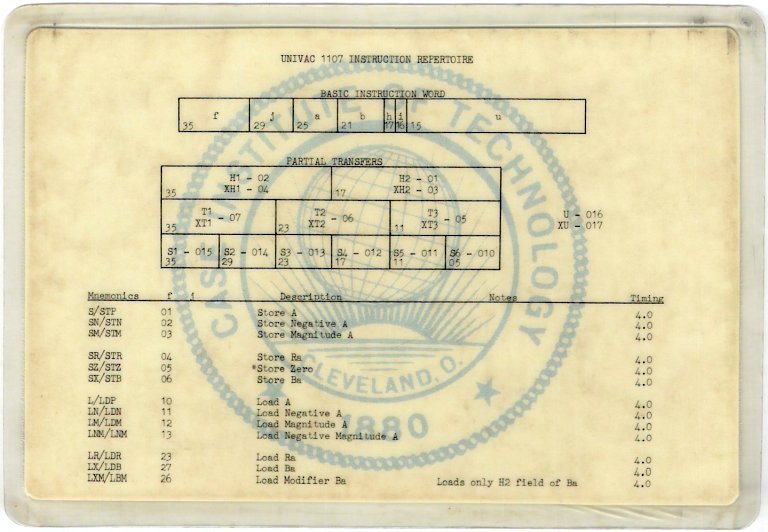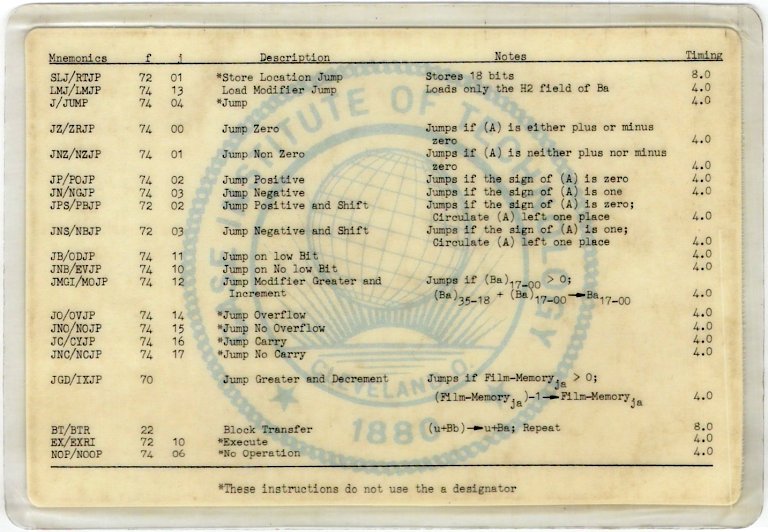
Some people stuck on stereotypes think the universal badge of the nerd is the pocket protector and five or six leaky pens in a rainbow of colours. But at Case Institute of Technology in the mid-1960s, the ultimate geeky fashion statement was these plastic-laminated UNIVAC 1107 code cards protruding from the pocket of your short-sleeved white shirt. I had a set. Everybody I knew had a set; even the one or two cool nerd chicks had a set. We knew who we were, and we knew we shared something the others didn't.
What we shared back then was knowledge of the instruction set of the Case UNIVAC 1107 which provided instructional and research computing facilities to the entire institute. The assembly language of this computer was dubbed “SLEUTH”, one of the most pained acronyms of all time, after “Symbolic LanguagE for the UNIVAC 1107 THin Film Computer”. With the advent of the UNIVAC 1108, they just called it “Assembler”. There was SLEUTH I, used with the EXEC I operating system developed by UNIVAC, and SLEUTH II, implemented as part of the Computer Sciences Corporation EXEC II operating system which the majority of UNIVAC 1107 machines ran. The EXEC III system developed at Case, derived from EXEC II, but supporting the Case designed and implemented “guard mode” (privileged instruction) mechanism, used the SLEUTH II assembler mnemonics. This reference card includes both (SLEUTH II first), but I'm unaware of any instance where SLEUTH I mnemonics were used to program the Case 1107. Instructions protected by guard mode, which were prohibited to user programs on the Case 1107, are not included on this reference card. EXEC III can be considered one of the first “Open Source” software systems. Although it could not run on any other hardware, the Case 1107 having been uniquely modified to implement the guard mode which secured it, a complete source code listing of the operating system was made available on a table in the computer room to anybody who sought an exploitable flaw. On at least one occasion, one was found—but that's another story, for another time.
Not only were these cards empowering to those who used the information they encoded to program the Giant Electronic Brain of the Quail Building, one or more person or persons undisclosed discovered that with a little fancy wrist action, they could be used to open doors locked from the inside in the Murray Hill dormitory complex. Imagine how this augmented the prestige of computer nerds on campus!




Special thanks to Bill Patterson, who managed to preserve this artefact of the bronze age of computing into the twenty-first century and kindly contributed scans to this archive.
UNIVAC has been, over the years, a registered trademark of Eckert-Mauchly Computer Corporation, Remington Rand Corporation, Sperry Rand Corporation, Sperry Corporation, and Unisys Corporation.